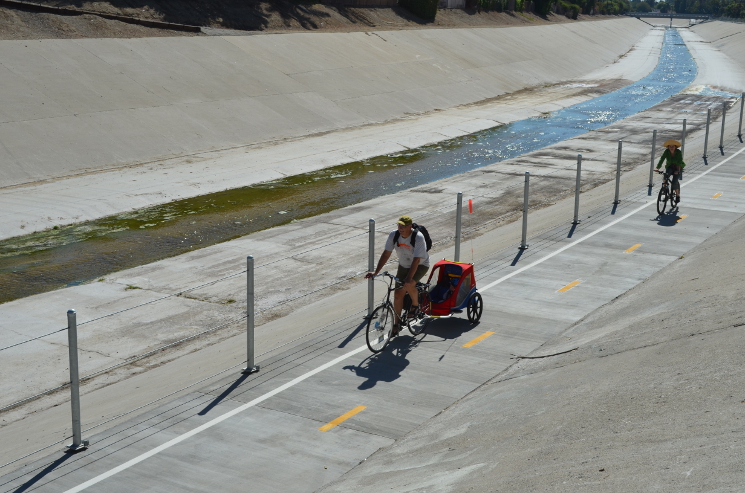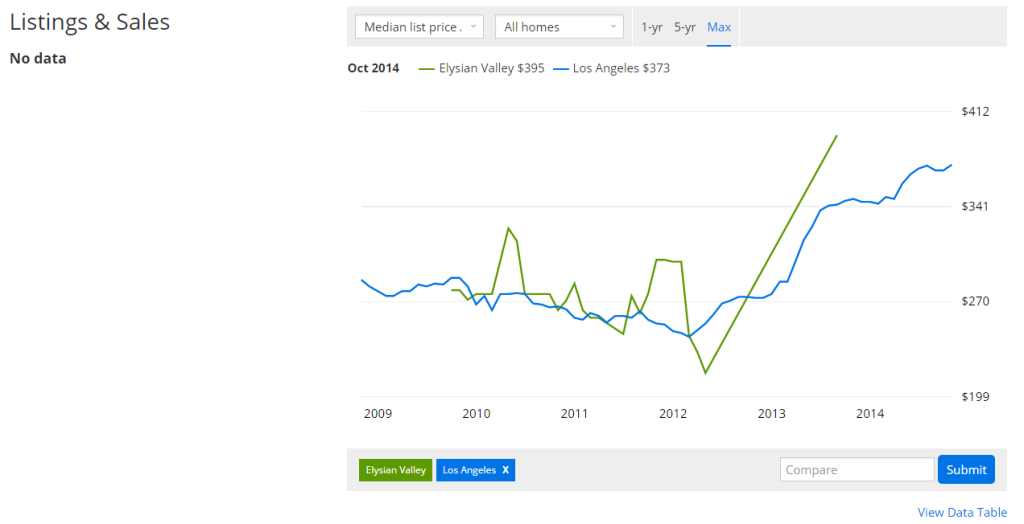A $1-billion restoration project, which aims to recreate the ecosystem and develop business spaces adjacent to Los Angeles River, is becoming a gentrification plan.
The U.S. Army Corps of Engineers, on May 28, recommended approval of spending $1.08 billion on creating wetlands, restoring habitat, and building bike trails along 11 miles of the Los Angeles River. This project, also known as Alternative 20, is a critical part of the L.A. River Revitalization Master Plan that is dedicated to transform the concrete river channel into a comfort, livable environment. Before the funding is pledged, however, real estate and land prices in some places have already risen steeply, which concerns many low-income residents.
According to Zillow.com, the median list price per square foot in Frogtown rose almost 85 percent from 2012 to 2013. And the median home value in Frogtown rose 10.2 percent over the past year to $469,300.
Frogtown, whose official name is Elysian Valley, is a tiny, isolated, lip-shaped neighborhood. Blogger Isaac Simpson described this town that “there are no retailers but the streets are packed with yard sales. There are no restaurants but tacos fry in front yard… It’s a community that supports itself in its own way.”
Now this town is about to lose its own serenity. Under the Master Plan, nonprofits, such as Friends of L.A. River is leading the river revitalization: building bike path, and cleaning up the river bed. Mayor Eric Garcetti announced a $3.2-million plan to transform Frogtown’s river-adjacent Marsh Park. And luxurious waterfront houses next to the park are midway through construction. The Frogtown Art Walk, an annual arts festival, where thousands of Angelenos show up every year, also helps promote this eco-friendly suburb to the rich.

A colorful 660-square-foot, two-bedroom, two-bathroom bungalow in Elysian Valley (Frogtown). The property’s asking $499,000.
The rising home prices in the Frogtown raises a question: is it possible for the poor and the rich to co-exist? The answer actually depends on how many jobs and how much wealth the revitalization plan can provide for the local community.
The $1-billion plan, according to a L.A. River Ecosystem Restoration Feasibility Study conducted by the Army Corps, is estimated to generate 16,833 opportunities in a variety of industries – construction, food services, real estate establishments, and wholesale trade business- and $4.68-billion labor income in total.
Also, city officials said that revamping the entire river could create recreational opportunities, such as kayaking, fishing and bicycling, and attract more than $5 billion in investment over the next 10 to 15 years, according to Los Angeles Times.
However, few officials can tell whether the river will be entirely restored in the next 10 or 15 years. Revamping the entire river, which means to un-pave the concrete banks, and preventing the floods at the same time require a whole transformation in L.A.’s urban form: building parking lots that could absorb rainfall during storm, narrowing streets to reduce runoff, or replacing neighborhoods away from floodplains.
Otherwise, the restoration of the entire river might end up like the one in the Tujunga Wash. The Tujunga Wash, according to Grist reporter Christian MiNeil, is one of Los Angeles’ first restoration site, which has a small parallel stream next to the larger paved river channel and surrounded by native vegetation and a cycling path. Melanie Winter, a watershed advocate, said the scope of the Tujunga Wash restoration project was too narrow.
Winter also said that until Los Angeles embraced those broader changes, restoration effort like the one at Tujunga Wash would end up spending more tax money to achieve less.
The billion-dollar proposal requires the federal government and local sources to share equally. According to Post-Periodical, 13 members of Congress representing districts in the Southland called on President Barack Obama on Nov. 24 to include this funding in his 2016 budget.



Leave a Reply
You must be logged in to post a comment.